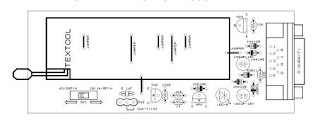We have seen that sampling a bandlimited signal at or above the Nyquist sampling rate does
not destroy any information content and fully characterises the bandlimited signal. A
system transmitting these sampled values of the bandlimited signal is called a sampled-
data or pulse modulation system. In modern communication systems, these sampled
signals are often quantised and coded before transmission. We have pulse code
modulation (PCM).
Pulse code modulation is very popular because of the many advantages it offers. These
include:
1. Inexpensive digital circuitry may be used in the system.
2. All-digital transmission. PCM signals derived from analogue signals may be time-
division multiplexed with data from digital computers and transmitted over a
common high-speed channel.
3. Further digital signal processing such as encryption is possible.
4. Errors may be minimised by appropriate coding of the signals.
5. Signals may be regularly reshaped or regenerated using repeaters at appropriate
intervals.
Figure 14.1 shows a single-channel PCM system.
Figure 14.1 A single-channel PCM transmission system.
An analogue message m(t) is first sampled at or above the Nyquist sampling rate. These
sampled signals are then converted into a finite number of discrete amplitude levels. The
conversion process is called quantisation. Figure 14.2 shows how an analogue message
is converted into 8 amplitude levels with equal spacing by an 8-level quantiser.
Figure 14.2 Message and quantised signal.
Quantisation obviously reduces the degree of accuracy of representation of the sampled
signal and introduces some error in the reproduction of the signal at the receiver. Error
introduced by the quantiser is called quantisation error or quantisation noise. To
reduce the quantisation error, we simply increase the total number of amplitude levels
(decreasing the spacing between adjacent levels). What is the minimum number of
quantisation levels for speech? 8 ~ 16 levels are sufficient. In practical digital telephone
8
systems, 256 = 2 levels are used to keep the quantisation error to a tolerable level. 65,536
16
= 2 levels are used for the CD digital system.
14.1
Pulse Code Modulation on Mac
If the quantised samples are transmitted directly over a channel, we have a quantised
PAM system. If, instead, we code each quantised sample into a block of digits for
transmission, , we have a PCM system. The decimal-to-binary conversion can be done
in various ways. Table 15.1 shows two possible coding rules (binary and gray coding) for
converting a 16-level sample into 4 binary digits.
The eleme nts b and g are related to each other by the following equations:
nts b and g are related to each other by the following equations:
where + represents the modulo-2 operation. It can be seen from Table 14.1 that, in
changing from one decimal digit to an adjacent digit, the binary code may change by more
than one binary digit. This makes the binary code highly susceptible to error in recording
14.2
Pulse Code Modulation on Mac the analogue-to-digital conversion. One would prefer a code in which only one binary digit
at a time changed as the corresponding input digit changed by one level. Gray code has the
above property and is the preferred coding method. Figure 14.3 shows 3 quantised
samples and their corresponding coded bit sequences.
Figure 14.3 Binary and Gray coding of samples.
In Figure 14.4, we show a complete 10-channel PCM system and its associated signal
shapes at various transmitting points. Clearly, the bandwidth required at the output of the
binary encoder is three times the bandwidth required at the input and the output of the
quantiser. Thus, a binary PCM system requires more transmission bandwidth than the
PAM and the quantised PAM systems.
Figure 14.4 Ten-channel PCM system. (a) Transmitter. (b) Receiver. (c) Signal
shapes.
Bandwidth Reduction Technique
Binary coding is just one special case of a coding method in a PCM system. In general, we
can code a quantised sample into a group of m pulses every T seconds, each pulse with a
duration of t = T/m seconds and n possible amplitude levels. Clearly, the total number
m of amplitude levels that a quantised signal can have is M = n . The ability to choose n
and m gives us some freedom to reduce the transmission bandwidth. Figure 14.5 shows
the bandwidth reduction effects when we vary n and m. If n is fixed, we can reduce the
transmission bandwidth by reducing the value of m. This is shown in Figure 14.5 (a). If
M is fixed, we can reduce the transmission bandwidth by increasing the value of n and
reducing the value of m. This is shown in Figure 14.5 (b). The collapsing of successive
pulses onto one much wider pulse reduces the transmission bandwidth. However, there is
one major drawback for the fixed M case. If the spacing between adjacent levels is fixed,
the required peak power goes up as n increases. On the other hand, if the peak power or
amplitude swing is fixed, adjacent levels get closer to each other. This makes easier for
noise to obscure adjacent levels. Not a very good bandwidth reduction technique! The
technique is only useful for very-low-noise environments.
n = 2 is the most noise-immune choice. As we are only dealing with on-off signalling, the
exact magnitude is not important. Reshaping of signals by repeaters facilitates the signal
decision process at the receiver.
Figure 14.5 Bandwidth reduction technique. (a) Fixed n, (b) Fixed M.
14.3
Pulse Code Modulation on Mac
References
[1] H. P. Hsu, Analog and Digital Communications, McGraw-Hill, 1993.
[2] M. Schwartz, Information Transmission, Modulation, and Noise, 4/e,
McGraw-Hill, 1990.
[3] L. W. Couch II, Analog and Digital Communication Systems, 6/e, Prentice
Hall, 2001.























